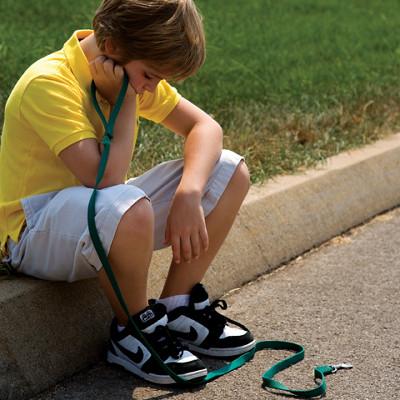
November 12, 2014
PetSafe® Expert
Jim Tedford
Finding a Lost or Missing Pet
If you’ve ever lost a pet or had one go missing, you know it can be an extremely traumatic experience for you as well as your pet. For many people, the first natural reaction is to panic. However, doing so will only hinder your search. By staying calm and following a logical search pattern, the chances of finding your pet are greatly improved. It will require plenty of commitment and determination, and it is also helpful if you can find friends and family who are willing to help out. Read on for more information on how to find a missing pet.
Lost Pet Databases
There are a number of websites that help people find missing pets. These sites are typically databases, akin to online bulletin boards where people can post announcements of pets that are missing or that have been found. Posting on a number of boards is a good way to help spread the word to a wider circle of people. Apart from simply posting a notice that your pet is missing, it may also be worthwhile to regularly check the Found announcements, since someone may have posted about finding your pet.
- The Center for Lost Pets
- Home Again – National Pet Recovery Database
- Pet Amber Alert
- 24 Pet Watch
- The Missing Pet Network
- Hugs for Homeless Animals
How to Locate a Missing Pet

If your pet has gone missing, the best place to start searching is at home. Many pets who run off end up coming back home and may simply be hiding in the garden or the garage for several hours. Do a thorough search of the house, including closets, behind and under areas where there are gaps, and so on. Next, widen the search to the immediate neighborhood on the same day. Check within your neighbors’ properties (with their permission!) as well as any local parks and public places.
Make a set of signs to put up around the neighborhood with details about the pet as well as a phone number where people can contact you. Be careful not to give away too many personal details. Several sites offer checklists of procedures to follow in case you have lost a pet. These lists are invaluable in helping to make sure that you’ve covered all the bases. Lastly, visit local shelters and animal rescue groups regularly, in case someone has dropped off your pet there.
- How to Proceed When You Find a Stray Pet
- Steps for Finding a Missing Pet
- Suggestions for Owners of Missing Pets
- Tips for Missing Pet Posters and More
- A Step-by-Step Guide to Finding a Lost Pet
- How to Tell Where a Missing Dog Might Be
- Tips for Finding a Lost Cat
- Where Do Lost Cats Tend to Go?
Stolen Pets and Pet Scams

Unfortunately, one of the sad truths about missing pets is that they may actually have been stolen. It may be utterly unthinkable to most people, but these stolen pets are used in dog fighting, animal mills, medical experiments, and other illegal schemes. While searching for your missing pet, be careful of certain pet scams. Some unscrupulous people may call and claim that they have found your pet but that they require money to be transferred to transport the animal or pay for medical expenses. If anyone calls regarding the pet and demands money, inform the police.
- Different Types of Lost Pet Scams
- Missing Pet Scams
- Why Are Pets Stolen?
- What Happens to Stolen Pets?
- Lost Pet Scams to Be Aware Of
- Money Transfer Pet Scams
- Lost Pet Schemes and Scams
- The Dark World of Dog Fighting
Prevention

The best way to keep your pets safe is to take active steps to prevent them from getting lost or stolen in the first place. Make sure your pet always wears a collar with a proper ID tag. A further step would involve getting your pet microchipped or having the pet tattooed. Never let your pet outdoors without a leash or without supervision. If you take your pet off-leash, make sure you have done enough training with a clicker, remote trainer, or other training tool or method.
In the backyard, check that any fencing is secure and without holes. If you don’t have a fence, consider installing an in-ground fence or wireless fence. Make sure you maintain it and regularly check the batteries in your pet’s receiver collar. Keep doors and windows secured so that pets do not have a chance to run away accidentally. If you have a pet door, keep it closed or locked at night, or consider installing an electronic pet door that will open and close automatically and can be set to only let certain pets in or out.
Get Email Updates
Subscribe to the latest news, promotions, & more from PetSafe® brand.
Sign up today for the latest news, promotions, and more from PetSafe® brand.





